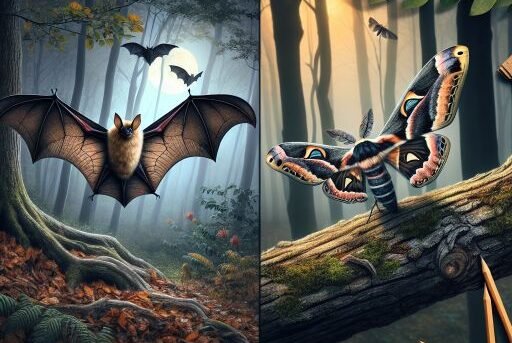Location and Habitat
Bats are fascinating creatures that inhabit diverse environments across the globe, from dense tropical rainforests to arid deserts and bustling urban areas. They are particularly fond of roosting in caves, tree hollows, and even man-made structures like attics and barns, which provide the darkness and seclusion they prefer. Bats play crucial roles in their ecosystems, not only in insect control but also in pollinating plants and dispersing seeds.
Moths, on the other hand, are widespread and can be found in virtually every terrestrial habitat, from polar regions to tropical rainforests. They are especially abundant in wooded or forested areas where they can easily camouflage themselves among leaves and bark. Moths are nocturnal and are often seen fluttering around lights at night. Their presence is vital for pollination, and their larvae serve as important food sources for a variety of birds, bats, and other predators.
Bat vs. Moth Comparison
| Animal | Size and Weight | Ability to Finish Opponent | Weaponry |
|---|---|---|---|
| Bat | Varies by species, typically 1.2 to 3.3 inches in length, weight from 0.03 to 3.3 lbs | High – Predatory instincts, can capture and consume moths | Echolocation, sharp teeth, agile flight |
| Moth | Varies widely, generally very small, lightweight | Low – Generally prey, lacks defensive capabilities against bats | Camouflage, some species have toxins |
“`
Hunting and Skills
Bats are skilled nocturnal hunters that use echolocation to navigate and locate their prey, primarily focusing on insects such as moths. They emit high-frequency sounds that bounce off objects and return to them, helping bats determine the size, shape, and distance of their prey. Moths, on the other hand, have evolved various defense mechanisms against bats, including hearing the high-frequency sounds bats produce. Some species of moths can even emit sounds to jam bat echolocation or have scales that absorb sound to make them less detectable. Despite these defenses, moths remain a primary food source for many bat species, highlighting a dynamic predator-prey relationship.
Bat vs. Moth Who Would Win?
The bat uses echolocation to detect the moth in the dark. The moth attempts to evade with erratic flying patterns. The bat is faster and more agile, catching the moth mid-air. The bat consumes the moth.
Winner: Bat, 90% chance of winning.




